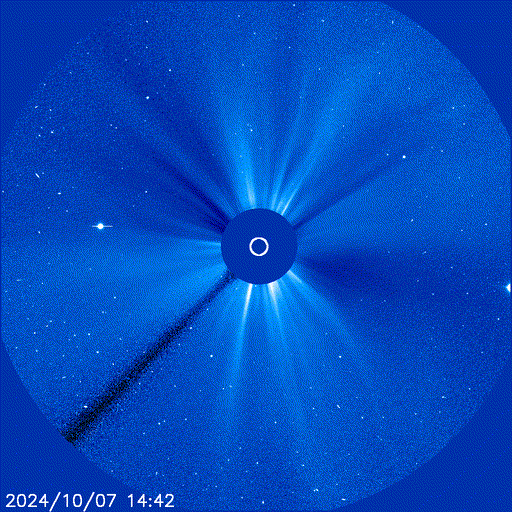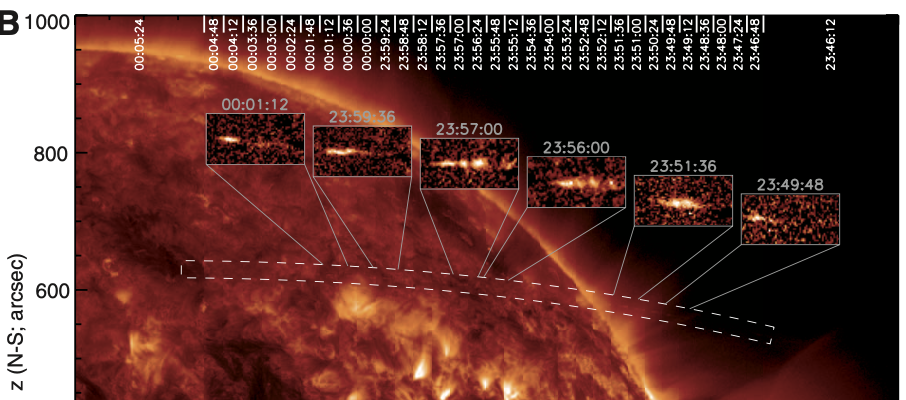
A sungrazing comet is predicted to reach perihelion distance of 0.0083 AU (~1.8 Solar Radii) on October 28 (see Minor Planet Center (MPC) discovery report for orbital information). This is an opportunity to have a nature-made “solar probe” that is even closer to Parker Solar Probe (PSP).
_lasco_c2_shortened.gif)
UPDATE: The comet disintegrated as it approached the Sun (in the bottom of this C2 field of view) and thus many of the planned observations described below were not possible (click on movie for full view).

Example of a different Comet, C/2023 A3 (Tsuchinshan-ATLAS), as observed by SOHO’s LASCO C3 coronagraph on October 8, 2024. See the NOAA/SWPC page for latest observations. Credit: George Millward (CIRES / Univ. Colorado, NOAA/SWPC).
Comet C/2024 S1 (ATLAS) could potentially turn out to be the largest/brightest Kreutz-family (sungrazing) comet since Ikeya-Seki (C/1965 S1). It will interact with the coronal plasma producing observable signatures along a specific path through the three-dimensional corona thus providing great observations tracing the solar magnetic field and offering a wide range of diagnostics of the physical conditions in the corona (i.e., cometary-coronal seismology). Observations of comet tail—heliospheric current sheet interactions during cometary crossings may provide constraints on the current sheet morphology and the solar wind structure in the inner heliosphere.
The close encounter of the comet C/2024 S1 (ATLAS) with the Sun also contributes to cometary science, as it offers unique opportunities to expose the otherwise invisible pristine interior of the comet, thus offering critical clues on the solar system origin.

Example of Comet-Corona interaction: Comet Lovejoy on December 16th, 2011. Top: Feathery material captured in a normal SDO/AIA 171 Å frame during the comet’s transit. Bottom: Persistence map showing the cometary material tracing coronal structures during the passage through the Sun’s corona of comet Lovejoy on its egress.

Example of destruction of a comet in the low corona: Comet C/20211 N3 (SOHO) on July 6th, 2011 (Credit: Schrijver et al. 2012, Science 335, 324) that flew through the low corona on the front side of the Sun. This is a composite SDO/AIA 171 Å image concatenating multiple snapshots of the comet along its trajectory (marked by the white dashed lines). The insets show enlarged view with the background image subtracted, highlighting the cometary emission. The multiple bright blobs distributed along the trajectory is a possible sign of fragmentation of the comet, as a result of immense solar heating and tidal force.
Based on the current orbit estimate, the closest plane-of-sky distance from the Sun would be about 3' (= 180") off the limb - viewed from Earth, about 1 hour after the actual perihelion. See this directory for views from different perspectives: Earth, PSP, SolO, and STEREO.
If you can provide observational support and/or have results to share, please contact us at whpi_help@hao.ucar.edu.